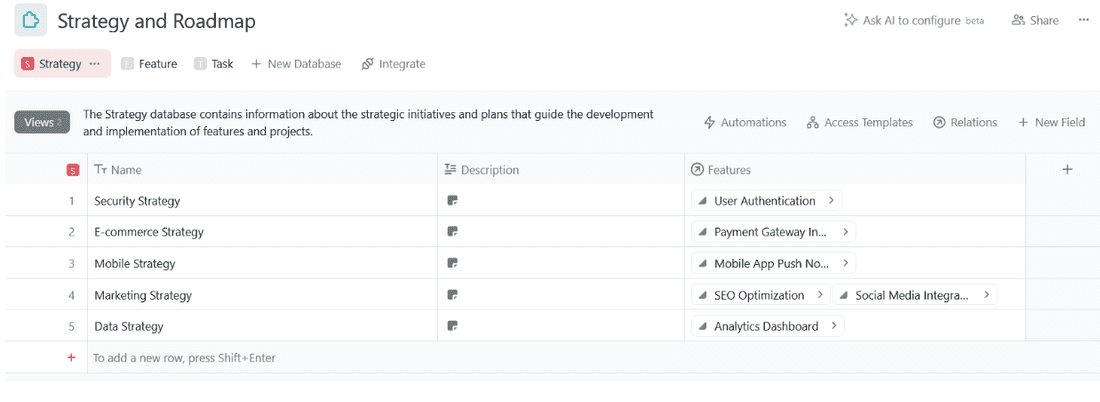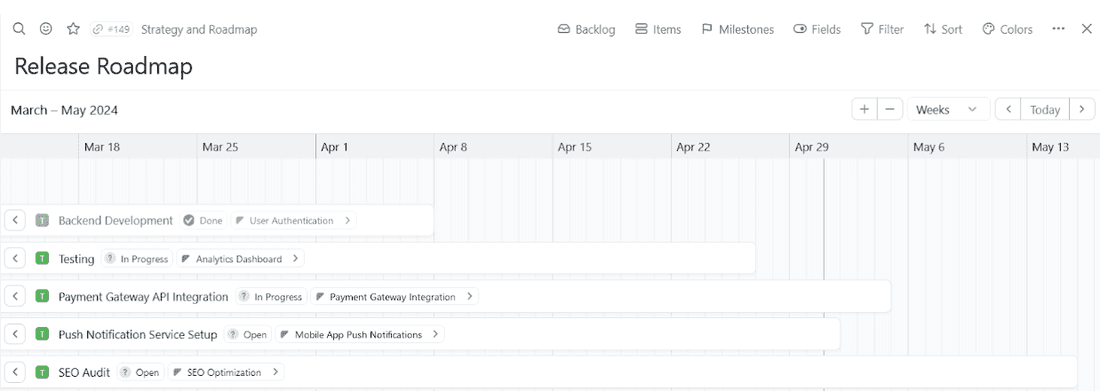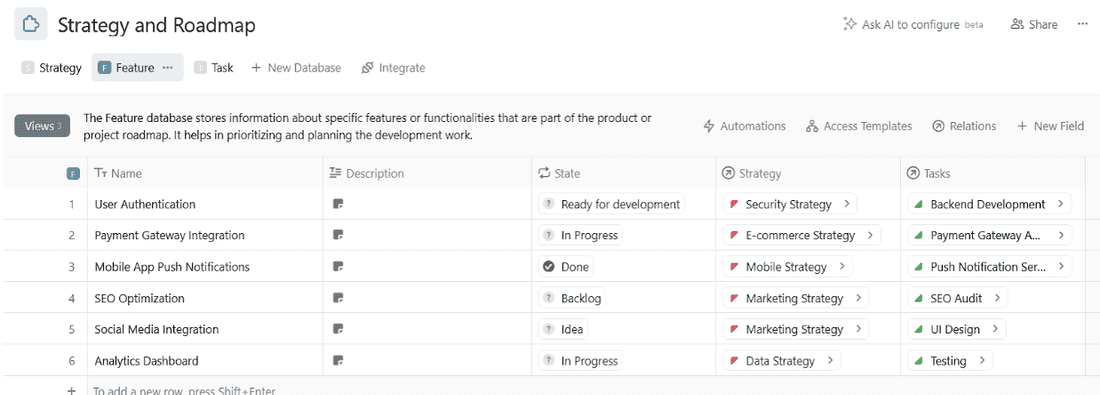Types of Product Roadmaps and Choosing the Right Path for Your Product
You’ve just been given the lead on a fresh product or project, or maybe you’re organizing a corporate getaway in Hawaii. Whatever it is, as someone steering the ship of product management, you know nothing big ever runs itself.
Right from the start, you need to set those goals straight, track every milestone closely, and make sure your team’s always reading from the same script.
The PM’s staple methodology for all this is, of course, the roadmap.
Roadmaps come in many shapes and sizes, and they’re not all created equal. This guide is here to simplify things by breaking down what types of roadmaps are out there that PM’s depend on time and again:
- We’ll offer up a no-nonsense definition of what a product roadmap really means.
- You’ll get hands-on advice to help choose one that actually matches where your product needs to go.
- Plus an honest look at different kinds of roadmaps with some nuggets from our own experiences thrown into the mix.
Whether these concepts are old hat or brand new, you’re about to dive deeper into each kind and discover how they function best.
What is a Product Roadmap?
A product roadmap is basically a plan for your product. It’s an important guide that shows what you aim to do with your product. Roadmaps detail the phases and key achievements from the starting point all the way to its release and all the things that come after that.
Consider it the link between what you’re aiming to achieve strategically and how you plan on making it happen in reality.
However, this isn’t set in stone, and roadmaps change. They adapt based on new information about what customers really want, input from people invested in your project, and those tough moments when you have to stop and question if everything’s on track.
How to Choose the Right Product Roadmap?
Choosing the right product roadmap involves more than just selecting an attractive format. It demands a thoughtful and honest look at what you’re trying to accomplish:
- Start by checking your goals: Your roadmap should clearly reflect the outcomes you want from your product.
- Know your audience: Are you creating this for team members who are building the product, people funding it, or those who will use it? Make sure it speaks their language.
- Decide on flexibility versus specifics: Consider how much of your plan needs to be set in stone and what can stay open to change. Some roadmaps need room to pivot, while others require detailed steps.
- Tool compatibility: Can your project management tool support your roadmap needs? If you’re using Fibery, for instance, you’re in luck – it’s built to handle just about any type you decide on.
The 4 Types of Product Roadmaps
In product management, there’s not just one kind of roadmap – there are several, each crafted to address different stages and goals in your product’s lifecycle.
Whether it’s laying out a big-picture plan or zeroing in on specific features, picking up on the subtle differences among them is vital for steering any project toward success.
Let’s walk through some key variations of roadmaps that can help keep you and your team moving forward:
1. Strategy Roadmap
A strategy roadmap focuses on where you want to be further down the line. It emphasizes broad objectives and important projects without getting bogged down by every single detail along the way.
Essentially, it answers “Why” we’re doing what we’re doing with our product strategy.
For those using Fibery, this type reflects how individual product plans mesh with wider company aims so everyone knows why they’re putting their oars in the water. Most importantly, it ensures they’re all pulling together cohesively.

2. Release Roadmap
This document is all about specifics. The release roadmap lays out the features, improvements, and bug fixes that are on deck to be rolled out.
It’s a favorite among those who build your product and key players with a stake in its success because it provides them with a shared schedule of anticipated updates.
With tools like Fibery, teams can get a visual of what stage these releases are at while keeping everyone’s expectations aligned.

3. Feature Roadmap
For product managers keen on detail, the feature roadmap is essential. Here we break down what new bells and whistles are coming up into detailed tasks ordered by how they help users or solve issues.
This roadmap is particularly useful for team members; it helps clarify which items take priority and understand just how big each task really is.
And again, Fibery proves handy as it connects these individual features back to overall goals to ensure everything contributes meaningfully to larger objectives.

4. Technical Roadmap
The technical roadmap is for the behind-the-scenes experts – the developers, engineers, and IT professionals. It zeroes in on specific technology goals like system improvements, advanced features, and structural updates.
This roadmap is key to making sure your product can grow and adjust when necessary.
Using a tool like Fibery allows you to keep track of areas that need future work (also known as ‘technical debt’) and helps plan for upcoming enhancements. It’s essential for keeping the tech team aligned with the broader product vision.

The PM’s Hot Take
Selecting the appropriate product roadmap is all about understanding your priorities and objectives. It’s important to recognize that a roadmap isn’t an unchangeable agreement. It’s not immutable nor set in stone. Rather, it serves as a guiding tool to navigate through the inevitable complexities that come with nurturing and developing your product. Flexibility is your friend.
Final Thoughts
In wrapping up, effectively handling the roadmap challenges is crucial in the journey of product management.
The objective is to select a roadmap that aligns with your product’s requirements and encourages unity among your team and stakeholders.
Whether you’re strategizing for future developments or orchestrating upcoming tasks, Fibery stands ready to provide the adaptability and transparency necessary to actualize your aspirations.
For additional insights and strategies on product management, we invite you to explore our latest blog posts, where you can learn how to navigate your product’s direction with assurance.
Psst... Wanna try Fibery? 👀
Infinitely flexible product discovery & development platform.